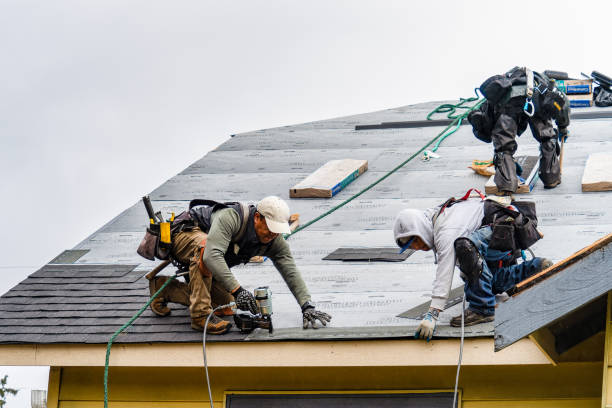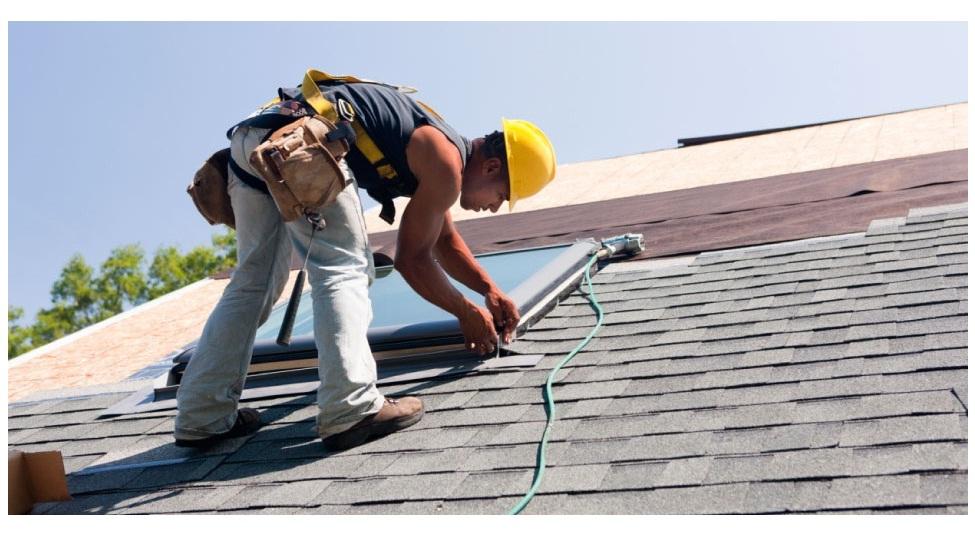A Comprehensive Overview to Effective Roof Covering Apartment Roof Covering Installation
The complexities of flat roofing system setup demand a meticulous approach, starting with a thorough understanding of various level roofing types and the important materials needed for ideal performance. An effective installment pivots not just on the choice of materials but additionally on the prep work and implementation of each action entailed in the process.
Understanding Apartment Roofing System Types
When considering level roofings, it is necessary to understand the numerous types readily available, as each offers distinct benefits and downsides customized to details needs. One of the most typical kinds of level roofs consist of Built-Up Roofing (BUR), Customized Bitumen, and Single-Ply membranes.
Built-Up Roof covering includes several layers of asphalt and gravel, supplying excellent toughness and weather resistance. It is specifically advantageous in locations prone to serious climate condition but might call for more maintenance as a result of its complex building.
Changed Asphalt is a popular option for its convenience of installation and adaptability. It frequently employs a torch-applied or self-adhesive method, which can be beneficial for fast repairs and long-lasting efficiency. Its life expectancy can be shorter compared to BUR.
Single-Ply membrane layers, consisting of Thermoplastic Olefin (TPO) and Ethylene Propylene Diene Monomer (EPDM), are recognized for their light-weight nature and energy effectiveness. These products are frequently favored for commercial buildings as a result of their cost-effectiveness and simplicity of installment (Cleveland Roofing Specialists). Nevertheless, they might not provide the very same level of insulation as various other options.
Each roof type calls for careful consideration based upon climate, budget plan, and particular task needs.
Important Materials for Flat Roofing
A variety of essential products are crucial for the effective installment of level roof systems. The option of materials directly impacts toughness, performance, and overall effectiveness.
One of the key products is the roof membrane, which can be constructed from numerous materials such as polycarbonate polyolefin (TPO), ethylene propylene diene monomer (EPDM), or PVC. Each kind provides unique benefits, including UV resistance and versatility, which are vital for prolonged performance.
In enhancement to the membrane, insulation materials play a significant duty in power performance. Rigid foam boards or polyisocyanurate insulation are popular options, as they give exceptional thermal resistance and wetness administration.
Additionally, roofing adhesives and sealants are vital for making sure a leak-proof installation. These items should work with the picked membrane to stop deterioration with time.
Planning For Setup
Proper prep work is vital for a successful level roofing system installation, as it lays the groundwork for a resilient and efficient roof. Begin by conducting a complete examination of the existing roofing system structure. Try to find indications of damage, including leaks, rot, or insufficient drain, which could compromise the new roof. Make certain that the hidden materials are audio and can sustain the weight of the new roofing elements.
Next, gather all essential devices and products, guaranteeing that they fulfill industry criteria. This includes waterproof membranes, insulation, flashing, and fasteners. Familiarize on your own with the maker's requirements, as adherence to these standards is crucial for warranty functions.
In addition, make certain that the workplace is clear of particles and obstructions to help with safe and reliable setup. Think about weather conditions; prevent installment during heavy rain or extreme temperature levels, which can affect product performance. Notify any passengers of the building regarding the forthcoming job to ensure safety and security and minimize interruptions. By taking these primary actions, you can improve the possibility of a successful flat roofing installment that fulfills both aesthetic and structural requirements.
Step-by-Step Installment Process
With the foundation established with comprehensive preparation, the following stage entails performing the flat roofing setup systematically. Begin by guaranteeing that the architectural deck is cost-free and clean from debris. Next off, install a vapor obstacle to protect against wetness build-up under the roof material. This step is important for keeping the roofing's integrity over time.
Complying with the vapor barrier installment, lay down insulation boards, guaranteeing they fit snugly with each other to minimize discover here thermal bridging. Protect the insulation with suitable fasteners based on the roof covering type and regional building ordinance. Once the insulation is in place, it's time to apply the roof covering membrane layer. Depending on the selected material-- such as TPO, EPDM, or modified bitumen-- install the membrane layer according to the supplier's specifications.
Install blinking around boundaries, vents, and any kind of roofing system penetrations to improve waterproofing. After setup, perform a thorough examination to determine any type of prospective concerns before ending the project, guaranteeing a trustworthy and durable level roof covering system.
Upkeep Tips for Longevity
Regular maintenance is necessary to make sure the longevity and performance of a flat roofing system. One of the primary jobs is to perform regular inspections at the very least two times a year, ideally in spring and fall. Throughout these assessments, look for indicators of wear, such as blisters, splits, or pooling water, view publisher site which can show underlying problems.

Making certain correct drain is important to avoid water buildup. Check and clear rain gutters, downspouts, and scuppers to ensure unobstructed water circulation. In addition, inspect seals around vents, skylights, and various other infiltrations for any kind of signs of wear and tear, applying caulk or sealer as required to maintain a water tight obstacle.
Finally, consider professional upkeep solutions every few years for complete maintenances. By sticking to click to read these upkeep ideas, you can significantly extend the life of your flat roofing, ensuring it stays a reputable guard against the elements.
Verdict
Efficient flat roof setup demands a systematic method encompassing detailed examinations, product selection, and careful prep work. Abiding by the outlined actions during the installment process ensures the proper application of roof covering membranes and insulation while improving waterproofing with efficient flashing setup. Implementing regular maintenance methods significantly contributes to the long life of the roofing system. By following these standards, a reliable and durable flat roof option can be achieved, with the ability of standing up to various environmental conditions.
The complexities of flat roofing installation demand a thorough approach, starting with a detailed understanding of various flat roofing types and the vital products required for optimum efficiency.Proper preparation is necessary for an effective flat roofing system installation, as it lays the groundwork for a durable and efficient roof covering system. After setup, perform an extensive examination to recognize any possible concerns before concluding the task, ensuring a trustworthy and durable level roofing system.
